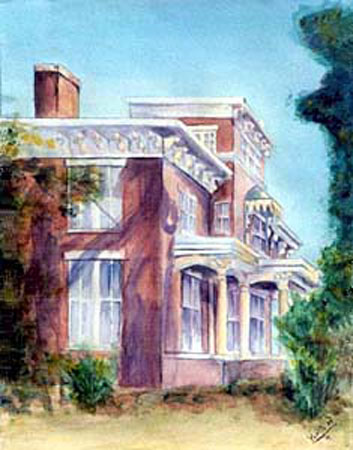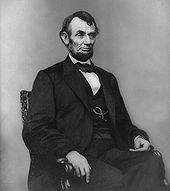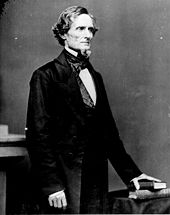

Send this page of Watercolor of Antebellum mansions of The South to a friend
Mansions South
mansion, antebellum, secession war, old houses, the South, Dixie, Southern, genre painting, classical realism, contemporary art, Yoyita, Plantaža, Plantáž, Plantage, Plantage, Istandus, Plantación, Plantejo, Plantation, 플랜테이션 농업, Plantaža, Piantagione,
מטע, ನೆಡುತೋಪು, Plantage, プランテーション, Plantasje, Plantasje, Plantacja, Plantação, Плантация, Plantation, Plantáž, Plantaža, Plantaasi,
Plantage, Плантація, Đồn điền, 种植业
|
 |
|||||
 |
|||||
|
• Parakeets • Washing clothes in the lagoon • The Magnolias • Mardi Gras
• Enlightment • Landscape and water • Nude 2 • Nude 3 |
Antebellum mansions of The South |
Antebellum mansions of The South |
|||||||
Watercolor on paper 8 1/4 by 11 1/2 inches |
 |
Acquarello su carta 8 1 / 4 da 11 1 / 2 pollici |
|||||
|
Precedente | Acquarello | Dopo |
||||||
Acuarela sobre papel 36" by 52" |
Aquarela sobre papel 8 1 / 4 de 11 1 / 2 polegadas |
||||||
Anterior | Acuarela | Siguiente |
Precedente | Aquarela | Em seguida |
||||||
Aquarelle sur papier 8 1 / 4 par 11 1 / 2 pouces |
水彩紙 8 1 / 4 11 1 / 2インチ |
||||||
Précédent | Aquarelle | Après |
前 | ルネサンス | 次に |
||||||
Aquarell auf Papier 8 1 / 4 von 11 1 / 2 Zoll |
水彩纸本 8 11 1 / 2 1 / 4英寸 |
||||||
Vorhergehend | Aquarell | Zunächst |
The Magnolias |
上次 | 水彩画 | 未来 |
|||||
Watercolor of Antebellum mansions of The South |
|||||||
Watercolor Antebellum mansions of The South |
|||||||
Antebellum mansions of The South, watercolor paintingAntebellum mansions of The South Antebellum or ante-bellum (Literally, Latin for "before the war") Antebellum architecture (sometimes spelled ante-bellum, and from the Latin ante, "before", and bellum, "war") is a term used to describe the characteristic architecture of Southern United States, especially the Old South, from after the birth of the United States in the American Revolution, to the start of the American Civil War.[1][unreliable source?] It is especially characterized by neoclassical (also called classical revival) or Greek revival (and clearly post-baroque) plantation houses and mansions. Genre works, also called genre scenes or genre views, are pictorial representations in any of various media that represent scenes or events from everyday life, such as markets, domestic settings, interiors, parties, inn scenes, and street scenes. Such representations may be realistic, imagined, or romanticized by the artist. Some variations of the term genre works specify the medium or type of visual work, as in genre painting, genre prints, genre photographs, and so on. Genre painting Genre painting, also called genre scene or petit genre, depicts aspects of everyday life by portraying ordinary people engaged in common activities. One common definition of a genre scene is that it shows figures to whom no identity can be attached either individually or collectively - thus distinguishing them from history paintings and portraits. A work would often be considered as a genre work even if it could be shown that the artist had used a known person - a member of his family, say - as a model. In this case it would depend on whether the work was likely to have been intended to be perceived as a portrait by the artist - sometimes a rather subjective question. The depictions can be realistic, imagined, or romanticized by the artist. Because of their familiar and frequently sentimental subject matter, genre paintings have often proven popular with the bourgeoisie, or middle class. The petit name contrasts this with the grand genre, history painting. Genre themes appear in nearly all art traditions. Painted decorations in ancient Egyptian tombs often depict banquets, recreation, and agrarian scenes, and even medieval prayer books such as the Book of Hours (see Les Tres Riches Heures du Duc De Berry) are decorated with "peasant" scenes of daily life. |
|||||||
|
|||||||
| Category:Colonial architecture in the United States Category:Neoclassical architecture in the United States Category:Classical Revival architecture in the United States Category:Greek Revival architecture in the United States |
American Civil War |
|
|---|---|
| Date April 12, 1861 – April 9, 1865 (last shot ended June, 1865) Location United States, Atlantic Ocean, Pacific Ocean Result Union victory Territorial integrity of the United States of America preserved Reconstruction Slavery abolished |
|
| Belligerents | |
| Commanders | |
|
|
| Casualties and losses | |
| 110,000 killed in action 360,000 total dead 275,200 wounded |
&93,000 killed in action 260,000 total dead 137,000+ wounded |
 |
 |
| Abraham Lincoln 16th President (1861–1865) |
Jefferson Davis, only President of the Confederate States of America (1861–1865) |
| Mississippi Images of The South |
|
| Amazon |
|
Antebellum Mansions of The South Copyright 1976-2013 Dr. Gloria Norris.
Click
|
mansion, antebellum,secession war, old houses, the South, Dixie, Southern, genre painting, classical realism, contemporary art, Yoyita, Plantaža, Plantáž, Plantage, Plantage, Istandus, Plantación, Plantejo, Plantation, 플랜테이션 농업, Plantaža, Piantagione,
מטע, ನೆಡುತೋಪು, Plantage, プランテーション, Plantasje, Plantasje, Plantacja, Plantação, Плантация, Plantation, Plantáž, Plantaža, Plantaasi,
Plantage, Плантація, Đồn điền, 种植业 |